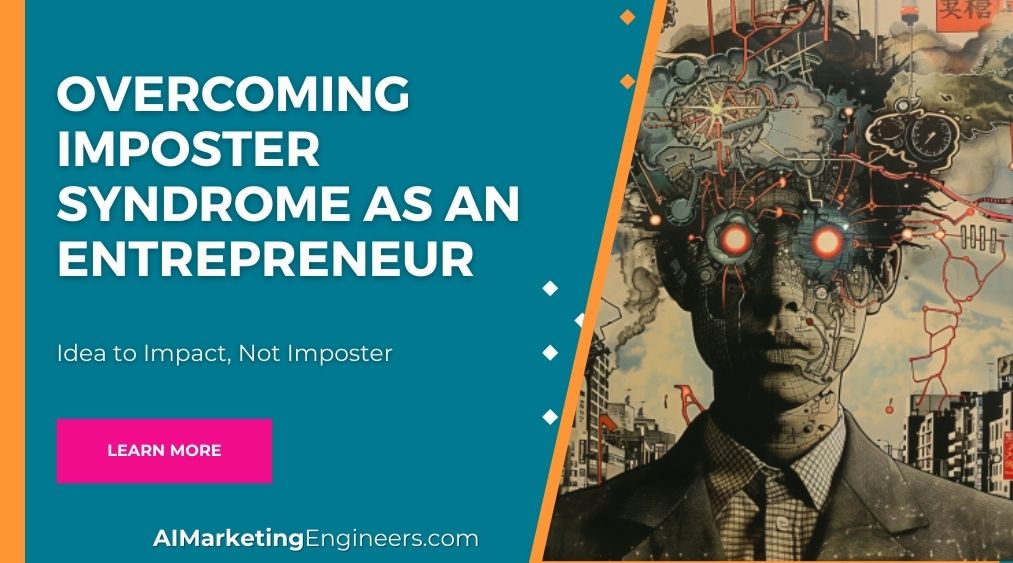Key Takeaways
✅ Embed Sustainability into Business Strategy: Integrate sustainability at the core of your strategy. Set clear goals, align them with your mission, and ensure they are part of strategic planning. This can drive innovation and attract conscientious consumers.
✅ Demonstrate Commitment and Transparency: Communicate goals clearly to all stakeholders. Establish dedicated teams and rigorous reporting. Transparency builds trust and engagement, leading to business success.
✅ Redesign Products and Services for Sustainability: Innovate to make products and services more sustainable. Companies save costs and appeal to eco-conscious consumers by reducing waste and using recycled materials.

Introduction
What if you could make your business not only profitable but also a force for good in the world? The challenge of Creating a Sustainable Business: Balancing Profit and Purpose is no longer a lofty ideal but a necessary strategy in today’s economy. Consumers increasingly demand that companies act responsibly, and businesses see the benefits of embracing this shift. Despite common worries about the cost and complexity, many firms find that sustainability boosts both their reputation and their bottom line.
This article delves into innovative ways to integrate environmental and social responsibilities into your operations while keeping an eye on profitability. You'll uncover insights and groundbreaking practices that show how balancing profit and purpose can lead to long-term success. Join us as we explore key strategies that make this vision a reality.
Top Statistics
| Top Statistics | Insight |
|---|---|
| 84% of CxOs agreed or strongly agreed that it is possible to achieve global economic growth while also reaching sustainability goals. | This shows the growing belief in aligning economic growth with sustainability among top executives, reflecting an important shift in business strategy. |
| By 2030, the global green technology and sustainability market is expected to reach almost 62 billion U.S. dollars, increasing at a compound annual growth rate of 20.8% from 2023 to 2030. | An optimistic forecast indicating rapid future growth in green technologies, providing vast opportunities for businesses willing to innovate sustainably. |
| Products marketed as sustainable have grown 2 times faster than those not marketed as sustainable. | This trend underscores the increasing consumer preference for sustainable products, highlighting the importance of sustainability in marketing strategies. |
| Gen Z (1995-2012) and Millennials (1983-1994) show the highest consideration for sustainability, at 94% and 93% respectively. | The younger generations are leading the charge for sustainability, which means businesses need to pay attention to their preferences to stay relevant. |
| 77% of companies say their sustainability initiatives increase customer loyalty. | Sustainable practices not only benefit the environment but also help in building a loyal customer base, demonstrating a clear business advantage. |
Understanding Sustainability in Business
A sustainable business operates with a focus on long-term viability, blending financial, social, and environmental impacts. This approach, known as the triple bottom line, ensures that businesses not only seek profit but also contribute positively to society and the planet. Long-term thinking provides multiple benefits, including resilience in economic fluctuations and a stronger, more loyal customer base.
Key Elements of a Sustainability Business Plan
Crafting a thorough sustainability business plan starts with an executive summary and a detailed business description. The sustainability vision and goals should clearly outline what the business aims to achieve. Evaluating the environmental, social, and economic impacts helps identify areas needing improvement. Strategies and actions must be specific and measurable, with defined performance indicators and targets. Implementation should include an ongoing monitoring and reporting mechanism to ensure continuous improvement.
Benefits of a Sustainable Business Model
A sustainable business model offers numerous perks. It attracts eco-conscious consumers and enhances brand value by showcasing a commitment to responsible practices. By reducing energy use and waste, businesses also improve public health and decrease operational costs. Being a trailblazer in sustainability can significantly boost public relations, ultimately leading to potential increased profitability and long-term success.
Challenges and Opportunities in Sustainable Business
Pursuing sustainability isn’t without its challenges. Companies often struggle with the wrong mindset or reluctance to allocate resources. However, finding allies and connecting with like-minded individuals can facilitate progress. Encouraging innovation and shifting away from harmful systems are crucial steps. Additionally, managing risks and leveraging the ample opportunities offered by greener practices will pave the way for a more sustainable future.
Developing a Small Business Sustainability Plan
For small businesses, starting with a solid understanding of sustainability is essential. Assess areas for improvement and set achievable goals. A roadmap for sustainability initiatives should be created, detailing step-by-step actions. Engaging business leaders, employees, and stakeholders in the process ensures broader support and involvement. Continuous monitoring and adjustments will help maintain momentum and achieve the set objectives.
Balancing Profit and Purpose
Integrating sustainability into business strategy is critical for long-lasting success. The benefits of a sustainable business model extend well beyond immediate financial gain, promoting resilience and a positive reputation. Businesses are encouraged to embark on this journey of balancing profit and purpose, reaping long-term rewards while making the world a better place.
AI Marketing Engineers Recommendation
Recommendation 1: Use Data Analytics for Balancing Profit and Purpose: To effectively balance profit and purpose, leverage data analytics to identify and capitalize on customer segments that value sustainability. According to a 2021 Global Sustainability Study by Simon-Kucher & Partners, 60% of consumers rate sustainability as an important purchase criterion. By employing insights from customer data, businesses can tailor their marketing strategies to highlight their sustainability credentials, thereby catering to this significant consumer preference. This can lead to increased loyalty and higher profit margins while staying true to sustainable goals.
Recommendation 2: Embed Sustainability into Corporate Strategy: Current trends indicate that integrating sustainability into the core business strategy rather than treating it as an add-on can drive long-term success. According to McKinsey’s 2022 report, companies that embed sustainability deeply into their operations are 2.6 times more likely to be among the leaders in their industries. Focus on creating transparent, verifiable sustainability goals that align with business metrics. This alignment can not only help in achieving regulatory compliance but also enhance brand reputation and customer trust.
Recommendation 3: Leverage Sustainable Marketing Tools: Employ sustainable marketing tools such as carbon footprint calculators and responsible sourcing platforms. Tools like the Carbon Trust Footprint Calculator help businesses measure and manage their carbon emissions, providing a basis for authentic and defensible environmental claims. A study by Nielsen found that 66% of consumers are willing to pay more for sustainable brands. By clearly communicating these efforts through marketing channels, companies can appeal to the growing segment of environmentally conscious consumers, thereby enhancing both profit and purpose.
Relevant Links
- Unlock the Power of AI in Your Marketing
- Master Sustainability Goals with Effective Campaign Strategies
- Enhance Customer Loyalty with Personalized Campaigns
- Boost Your Business with Data-Driven Insights
Conclusion
Balancing profit and purpose is essential for creating a sustainable business. By integrating social and environmental goals with financial objectives, companies can achieve long-term success and positive societal impact. A clear commitment to sustainability not only enhances brand reputation but also attracts customers and investors who value ethical practices. This balance fosters a more resilient and adaptable business model.
Moreover, sustainable practices can lead to operational efficiencies and cost savings. For example, reducing waste and improving energy efficiency can lower expenses while benefiting the environment. Embracing sustainability can also drive innovation, as businesses seek out new solutions that align with their ethical values. This continuous improvement cycle ensures that the company remains competitive and forward-thinking.
Finally, building a sustainable business requires collaboration and transparency. Engaging stakeholders, including employees, customers, and communities, in your sustainability efforts can generate valuable insights and support. Transparent communication about sustainability goals and achievements builds trust and loyalty. By working together, businesses can create a lasting positive impact while achieving financial success.
FAQs
Question 1: What does sustainability mean at your company or organization?
Answer: Sustainability refers to the integration of environmental, social, and governance (ESG) practices into business operations to ensure long-term success and minimize negative impacts on the environment and society.
Question 2: How does sustainability align with business goals?
Answer: Sustainability should align with business goals by balancing the triple bottom line (people, planet, profit) and ensuring that sustainability initiatives drive innovation, profitability, and competitive advantage.
Question 3: What are the main social, environmental, and economic challenges and opportunities in your company?
Answer: Companies should identify and articulate these challenges and opportunities to develop effective sustainability strategies.
Question 4: How can sustainability initiatives be integrated into day-to-day operations?
Answer: This can be achieved by setting targets, developing action plans, and incorporating sustainability into core operations. It also involves transparent communication and industry-specific considerations.
Question 5: What role does sustainability play in guiding product design?
Answer: Sustainability should be a key consideration in product design, focusing on reducing environmental impact through the use of sustainable materials, minimizing waste, and improving efficiency.
Question 6: How can a company incentivize investment in energy efficiency, renewable energy, and zero-carbon technologies?
Answer: Companies can incentivize investment by setting clear sustainability goals, providing training and resources, and incorporating sustainability into corporate strategy and employee incentives.
Question 7: How can a company assemble a successful sustainability team?
Answer: A successful sustainability team should have diverse skills, including expertise in environmental science, corporate strategy, finance, and communications. It should also have a passionate leader who can drive sustainability efforts forward.
Question 8: What is the importance of transparent communication in sustainability efforts?
Answer: Transparent communication is critical for building trust, enhancing reputation, and sharing sustainability achievements with stakeholders. This can be achieved through sustainability reports, social media, and participation in sustainability networks.
Question 9: How can a company measure and report its sustainability progress?
Answer: Companies should set measurable goals, track progress, and publish regular sustainability reports to ensure transparency and accountability.
Academic References
- Wilson, F. (2023). Sustainable Investing: Balancing Profit and Purpose in the Financial World. This article examines the motivations, challenges, and strategies of sustainable investing, highlighting its potential to reshape investment paradigms and contribute to a more equitable and sustainable future.
- Sustainable Business Practices: Balancing Profit and Purpose for a Better Future. This article discusses the growing movement of sustainable entrepreneurship, which combines profit-making with a deep sense of purpose, and its transformative impact on the business landscape.
- Sindakis, S. (2024). Balancing Profit and Purpose: Navigating Corporate Social Responsibility. This article emphasizes the importance of corporate social responsibility in increasing customer trust and loyalty, highlighting the need for companies to balance profit with purpose.












